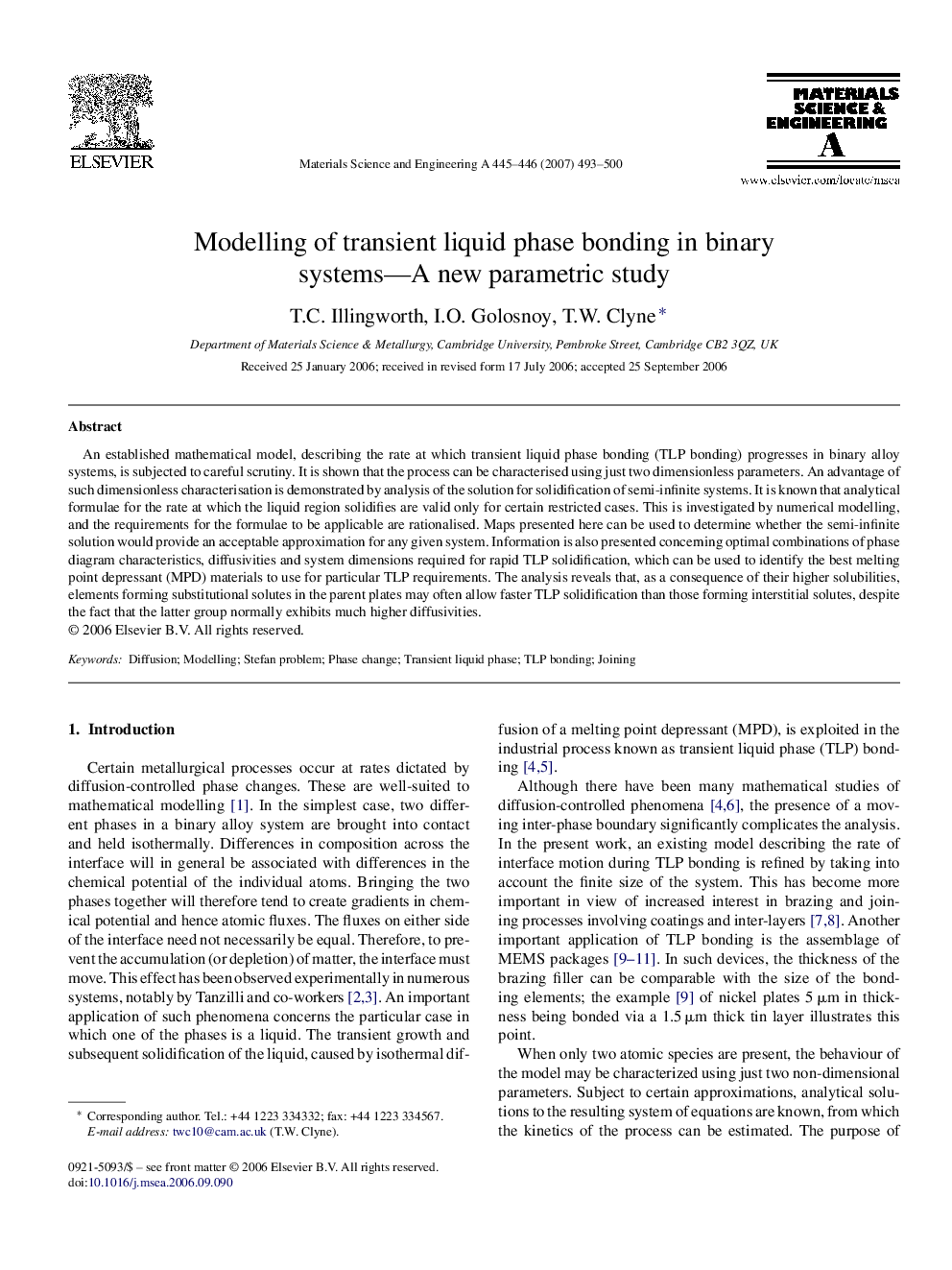| Article ID | Journal | Published Year | Pages | File Type |
|---|---|---|---|---|
| 1584453 | Materials Science and Engineering: A | 2007 | 8 Pages |
An established mathematical model, describing the rate at which transient liquid phase bonding (TLP bonding) progresses in binary alloy systems, is subjected to careful scrutiny. It is shown that the process can be characterised using just two dimensionless parameters. An advantage of such dimensionless characterisation is demonstrated by analysis of the solution for solidification of semi-infinite systems. It is known that analytical formulae for the rate at which the liquid region solidifies are valid only for certain restricted cases. This is investigated by numerical modelling, and the requirements for the formulae to be applicable are rationalised. Maps presented here can be used to determine whether the semi-infinite solution would provide an acceptable approximation for any given system. Information is also presented concerning optimal combinations of phase diagram characteristics, diffusivities and system dimensions required for rapid TLP solidification, which can be used to identify the best melting point depressant (MPD) materials to use for particular TLP requirements. The analysis reveals that, as a consequence of their higher solubilities, elements forming substitutional solutes in the parent plates may often allow faster TLP solidification than those forming interstitial solutes, despite the fact that the latter group normally exhibits much higher diffusivities.
